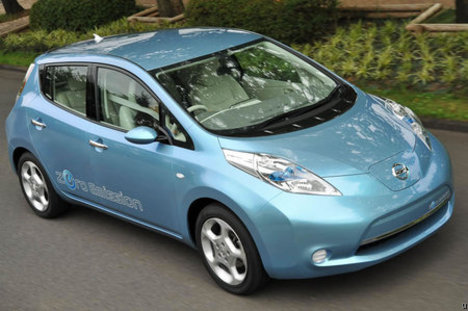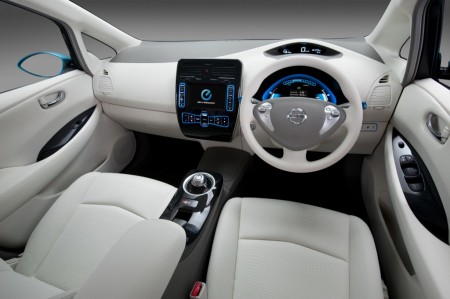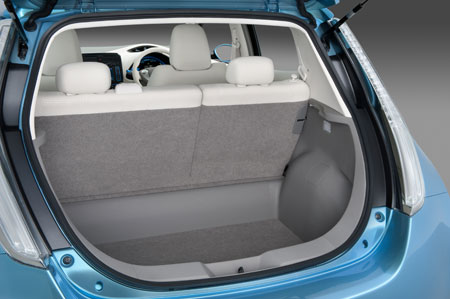
Whilst the car was on display at one of the few public showings, Tarmac managed to get a drive in the prototype. Whilst the test car is based on the Tiida model, the running gear is very similar to that which will be seen in the production Leaf in a few years time.Having announced that they were to be building the Leaf EV at their Washington plant in the UK, Nissan have been taking the car around the UK on a whistle-stop tour of Europe.
First impressions of the concept car are good. It looks, too all intents and purposes, like a regular car. This of course is for good reason, as regular cars are what people actually want. With the best intentions in the world, electric quadricycles like Reva's G-Wiz will never become commonplace as they can't offer the space and pace that people accept from the cars they're used to.
To this end then, the Leaf is off to a good start. It's a five-door hatchback with space for five, a good boot, and an inoffensive shape that manages to retain a bit of character. The front is modern and equipped with large headlights similar to those on the Ford Fiesta, and the rear has a hint of the last-generation Renault Megane about it. Even the interior is much like a normal car, with normal controls and two hooded instrument clusters. Only the large digital display in the centre console really hints at the Leaf's high-tech drivetrain.
From this point, the package starts looking quite different from regular cars. The shape has been specially designed for aerodynamic efficiency - those lights split airflow over the mirrors to reduce drag, and thanks to LED technology consume less power, too. The large Nissan badge on the nose sits on a hinged flap that opens up to reveal two charging points, one for quick chargers that can provied up to 80% charge in half an hour, and the other for a more leisurely charge. Range is around 100 miles which doesn't sound like a lot, but most research seems to suggest that the majority of journeys in the UK are over fewer than eight miles, so even if you didn't put the car on charge every night most people would still have enough for ten journeys.
The test car didn't have regenerative braking but the production Leaf will do. As such, the brakes felt quite sharp, having probably been beefed up in the test car to make up for the lack of engine braking. Normally, simply backing off the power would see significant braking from the motor - to the point where using the car's brakes would be an uncommon occurence in town.


Of course, this is very much price-dependant. The number being thrown about at the moment is around £27,000 which is a lot for a small family car, but as with any technology the early adopters will bear the brunt of higher prices and this will bring down the unit cost for the manufacturers.
The Nissan Leaf is a good car even at this early stage, and a serious indication by Nissan that electric cars can walk the walk as well as talking the talk.
No comments:
Post a Comment